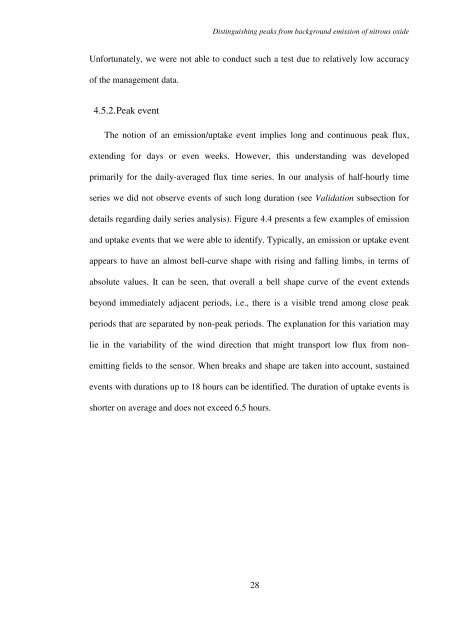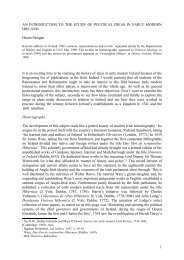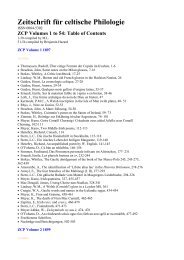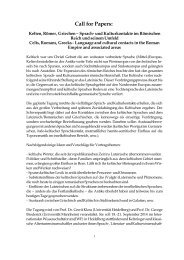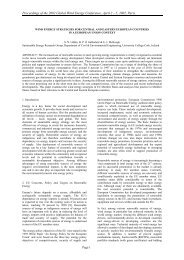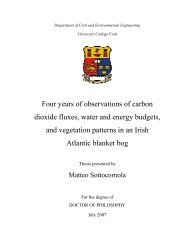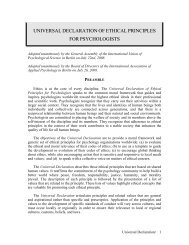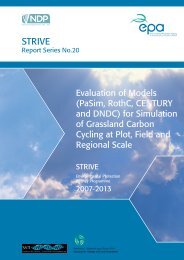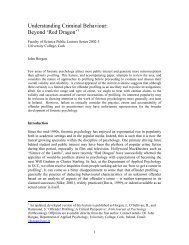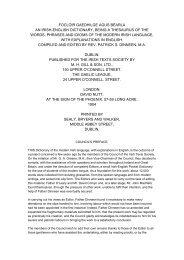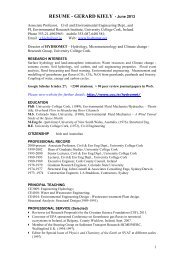PhD Thesis, 2010 - University College Cork
PhD Thesis, 2010 - University College Cork
PhD Thesis, 2010 - University College Cork
Create successful ePaper yourself
Turn your PDF publications into a flip-book with our unique Google optimized e-Paper software.
Distinguishing peaks from background emission of nitrous oxide<br />
Unfortunately, we were not able to conduct such a test due to relatively low accuracy<br />
of the management data.<br />
4.5.2. Peak event<br />
The notion of an emission/uptake event implies long and continuous peak flux,<br />
extending for days or even weeks. However, this understanding was developed<br />
primarily for the daily-averaged flux time series. In our analysis of half-hourly time<br />
series we did not observe events of such long duration (see Validation subsection for<br />
details regarding daily series analysis). Figure 4.4 presents a few examples of emission<br />
and uptake events that we were able to identify. Typically, an emission or uptake event<br />
appears to have an almost bell-curve shape with rising and falling limbs, in terms of<br />
absolute values. It can be seen, that overall a bell shape curve of the event extends<br />
beyond immediately adjacent periods, i.e., there is a visible trend among close peak<br />
periods that are separated by non-peak periods. The explanation for this variation may<br />
lie in the variability of the wind direction that might transport low flux from nonemitting<br />
fields to the sensor. When breaks and shape are taken into account, sustained<br />
events with durations up to 18 hours can be identified. The duration of uptake events is<br />
shorter on average and does not exceed 6.5 hours.<br />
28


